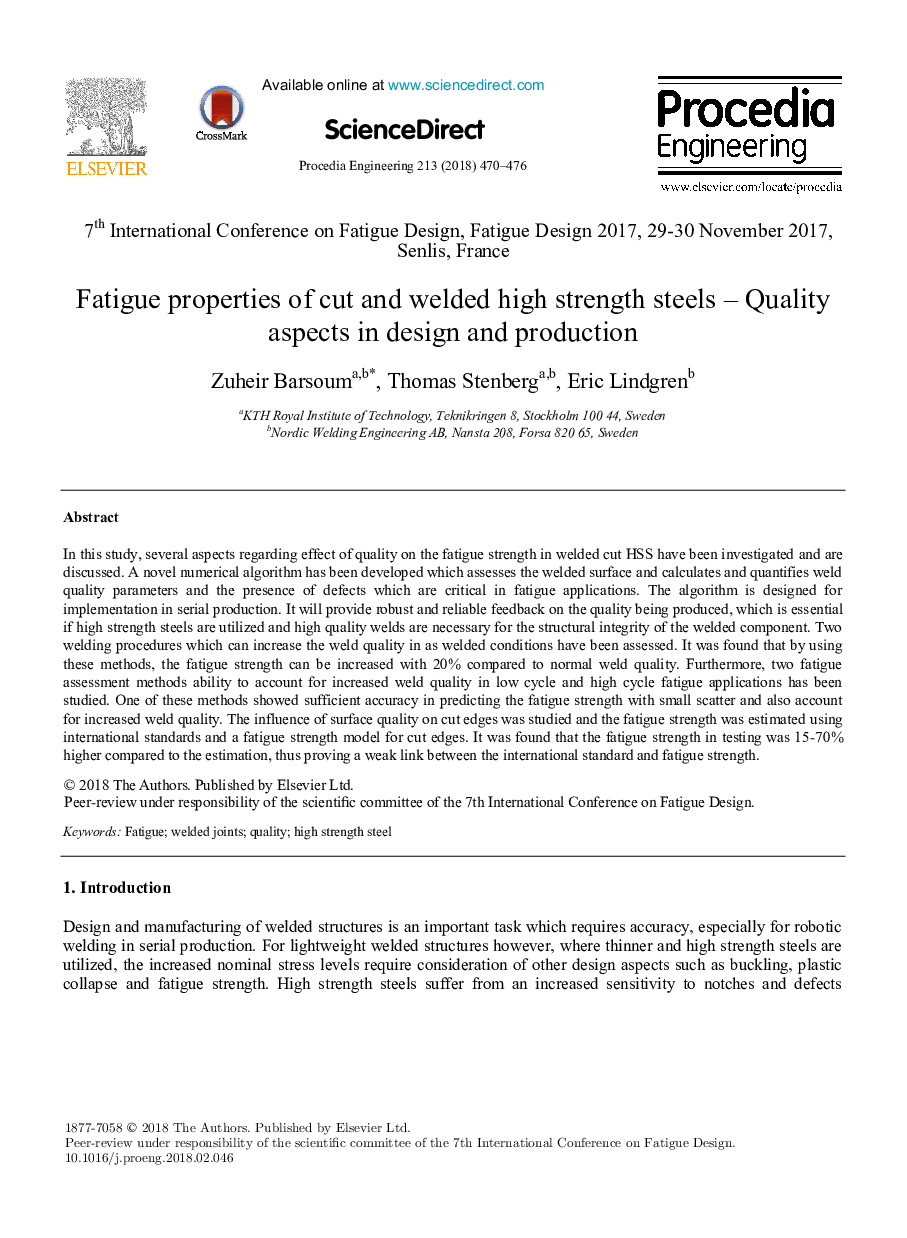| Article ID | Journal | Published Year | Pages | File Type |
|---|---|---|---|---|
| 7225626 | Procedia Engineering | 2018 | 7 Pages |
Abstract
In this study, several aspects regarding effect of quality on the fatigue strength in welded cut HSS have been investigated and are discussed. A novel numerical algorithm has been developed which assesses the welded surface and calculates and quantifies weld quality parameters and the presence of defects which are critical in fatigue applications. The algorithm is designed for implementation in serial production. It will provide robust and reliable feedback on the quality being produced, which is essential if high strength steels are utilized and high quality welds are necessary for the structural integrity of the welded component. Two welding procedures which can increase the weld quality in as welded conditions have been assessed. It was found that by using these methods, the fatigue strength can be increased with 20% compared to normal weld quality. Furthermore, two fatigue assessment methods ability to account for increased weld quality in low cycle and high cycle fatigue applications has been studied. One of these methods showed sufficient accuracy in predicting the fatigue strength with small scatter and also account for increased weld quality. The influence of surface quality on cut edges was studied and the fatigue strength was estimated using international standards and a fatigue strength model for cut edges. It was found that the fatigue strength in testing was 15-70% higher compared to the estimation, thus proving a weak link between the international standard and fatigue strength.
Related Topics
Physical Sciences and Engineering
Engineering
Engineering (General)
Authors
Zuheir Barsoum, Thomas Stenberg, Eric Lindgren,
